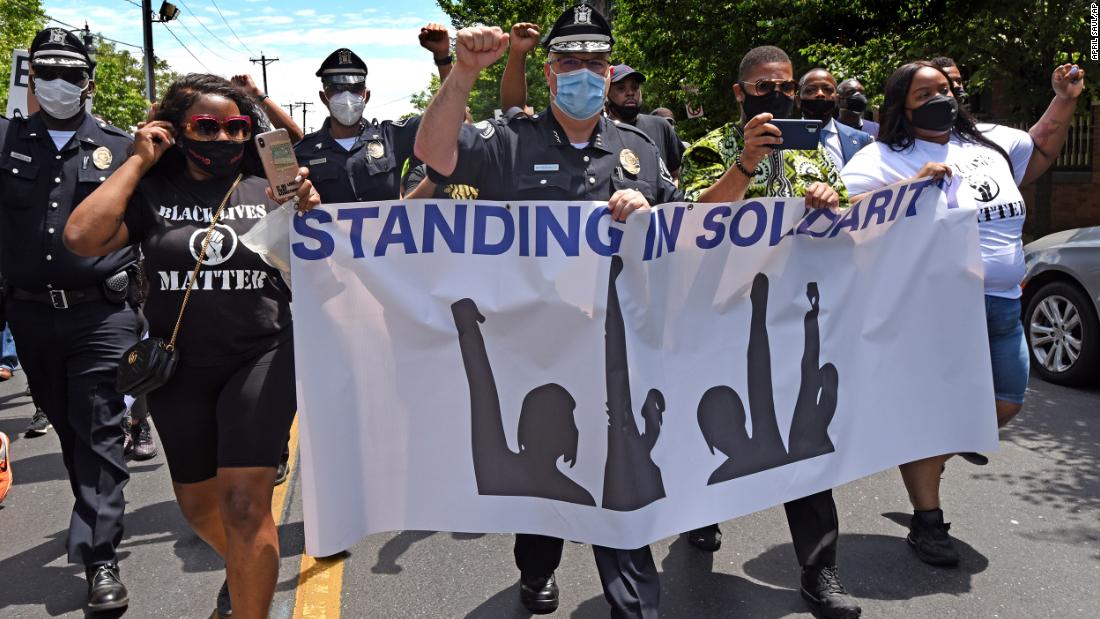This city, which made the move 7 years ago, may be the closest thing to a case study that those calling for ‘defunding police’ can get
Camden, New Jersey, may be the closest thing to a case study they can get.
The city, home to a population about 17% of Minneapolis’ size, dissolved its police department in 2012 and replaced it with an entirely new one after corruption rendered the existing agency unfixable.
Now, seven years after the old department was booted, the city’s crime has dropped by close to half. Officers host outdoor parties for residents and knock on doors to introduce themselves. It’s a radically different Camden than it was even a decade ago. Here’s how they did it.
Why departments dissolve police
A city’s decision to dissolve its police department is often a matter of money — and the cities that chose to do so are often quite small. Camden comes closest to Minneapolis in its size and history of misconduct.

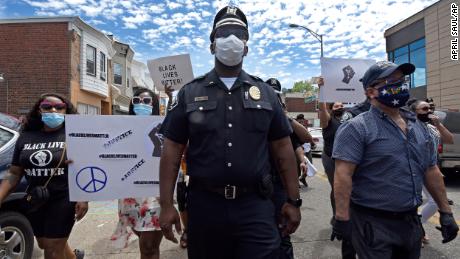
Lt. Zack James of the Camden County Metro Police Department marches along with demonstrators in Camden.
Camden dissolved its police department to root out corruption.
The city’s crime rate was among the worst in the US. Within nine square miles and among nearly 75,000 residents, there were over 170 open-air drug markets reported in 2013, county officials told CNN. Violent crime abounded. Police corruption was at the core.
So in 2012, officials voted to completely disband the department — it was beyond reform.
How the new Camden police changed its approach
City officials had two objectives in remaking Camden’s police: reduce crippling violent crime and make residents feel safer.
Louis Cappelli, Camden County freeholder director (another term for a county-level public official), said the department still has a ways to go, but its efforts over the last seven years have been largely successful.
“Back then residents of Camden city absolutely feared the police department and members of the department,” he told CNN. “They (the residents) wanted that to change.”
Violent crimes have dropped 42% in seven years, according to city crime data provided by the department. The crime rate has dropped from 79 per 1,000 to 44 per 1,000, the data shows.

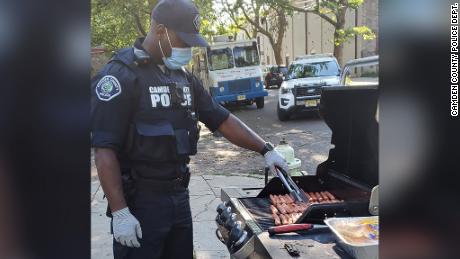
A Camden County officer grills hot dogs for one of the department’s pop-up neighborhood parties.
Cappelli credits the improvement to new “community-oriented policing,” which prizes partnership and problem-solving over violence and punishment.
It starts from an officer’s first day: When a new recruit joins the force, they’re required to knock on the doors of homes in the neighborhood they’re assigned to patrol, he said. They introduce themselves and ask neighbors what needs improving.
Training emphasizes deescalation, he said, and the department’s use of force policy makes clear that deadly force is the last option.
Now, police host pop-up barbecues and pull up in Mister Softee trucks to get to know residents, Cappelli said. They host drive-in movie nights — recently, the movie of choice was “The Lion King” — along what used to be known as the city’s “Heroin Highway.”
The community-first initiative has made improving diversity within the force a priority, too. Whites are the minority in Camden, so Cappelli said the new department has hired more black and brown officers to serve black and brown residents. (Cappelli didn’t have exact numbers for the increase, but said it’s improved.)
“We want to make sure residents of the city know these streets are theirs,” he said. “They need to claim these streets as their own, not let drug dealers and criminals claim them.”
What Minneapolis can learn from criticism of Camden
Camden also has about 356,000 fewer residents.
The criticisms lodged at Camden, though, may inform how Minneapolis goes about its restructuring.

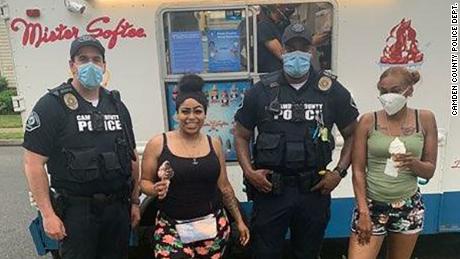
Camden County police pose with residents outside a Mister Softee ice cream truck.
Ojii BaBa Madi, a lifelong resident of Camden and Justice Minister at Asbury Community Church, said he’s felt no improvement in his relationship with police because many of the new officers don’t live in Camden or know the community well.
Additionally, the department’s racial makeup isn’t entirely reflective of the city it serves, he told CNN in an email.
“The demographics of the city do not reflect these demographics,” he said. “With a white chief, as thoughtful and progressive as he is, and only one African American captain out of seven, both the dynamics and optics of race are a problem.”
What has improved, he said, is officers’ willingness to have a “productive dialogue” between police and community leaders like him. And the city “does feel much safer at the neighborhood level” since police started shuttering open-air drug markets.
As for abolishing police entirely, Ojii said the city is “far away from any practical de-policed reality” partly because of the crime that still exists there.
“I would prefer to nail some best practices for policing as it should be,” he said, as the city — and society — figures out how to change law enforcement as it exists now.

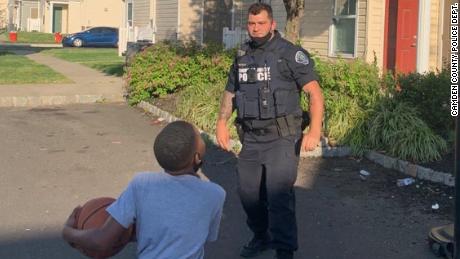
A Camden County officer plays basketball with a young resident.
Nyeema Watson, also a lifelong Camden resident who’s the associate chancellor for civic engagement at Rutgers University — Camden, said she thinks the restructuring has had a largely positive impact. Officers are more visible now, and they’re building trust and welcoming feedback.
Watson and Ojii agreed the city’s problems remain unsolved. Those require more work than a shift in law enforcement alone can provide.
“We can’t police our way out of social issues, unemployment, disproportionate health issues, economic challenges — these are things that drive crime,” Watson said.
When the city improves access to education for its residents, they’ll better understand systemic racism within law enforcement and how to dismantle it, she said.
“There are so many issues in our city, outside of policing, that promote a constant level of tension,” Ojii said, naming gentrification, poverty and addiction among them. “In essence, Camden remains a tale of two cities.”
![]()


